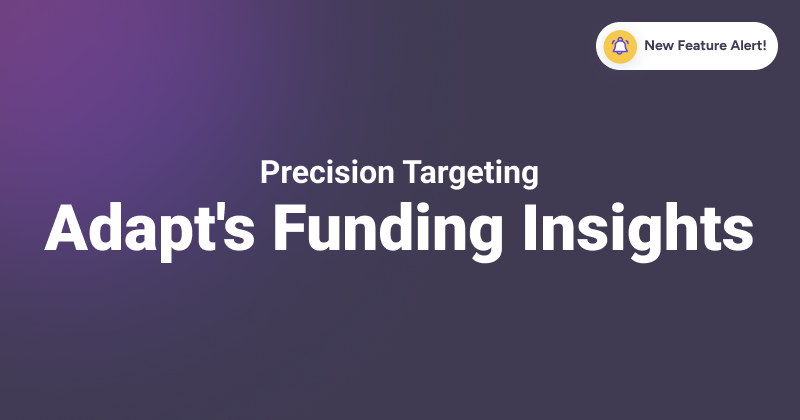Over a decade has passed since numerous experts predicted the potential decline of outbound sales, given the increasing favorability towards inbound sales. However, that’s not true. In fact, 62% of marketers claim to benefit more from outbound sales than inbound and find them highly effective and successful. On top of that, 18% of marketers believe outbound sales are the way to go for generating the highest quality leads.
So, what exactly is outbound sales? And how does it differ from inbound sales? What are some of the biggest challenges sales reps face during their outreach efforts and effective strategies for a successful outbound campaign? We have covered all this and more in this piece. Read along.
What is Outbound Sales?
Outbound sales, as opposed to inbound sales, refers to organizations’ proactive approach to initiate contact with potential customers or clients. This method involves reaching out to individuals or businesses through various communication channels, such as telephone calls, emails, or direct messages, to generate interest, create opportunities, and ultimately close deals.
One typically gathers leads or prospects through market research, customer databases, or targeted lists in outbound sales. These leads are then engaged by sales representatives who actively reach out to them with a tailored pitch or value proposition. The primary aim of outbound sales is to proactively identify and engage potential buyers instead of waiting for customers to approach the company.
Difference between inbound and outbound sales
Outbound sales and inbound sales are two distinct approaches to lead generation and revenue generation. Outbound sales involve a proactive outreach strategy where organizations identify and target specific individuals or organizations as potential customers. Sales teams initiate contact through cold calls, emails, social media outreach, or direct mail. They pitch their product, qualify leads, and engage in persistent follow-up to nurture leads toward a purchase decision. This approach provides organizations with more control over targeting and timing.
In contrast, inbound sales adopt a content-centric approach. Organizations create valuable and informative content such as blog posts, e-books, and webinars that address their target audience’s pain points and needs. Leads engage with this content voluntarily, often discovering it through online channels like search engines, social media, or email subscriptions. Once captured, these leads are nurtured through personalized communication tailored to their stage in the buyer’s journey. Inbound sales aim to provide timely and relevant information, relying on organic traffic and engagement rather than proactive outreach.
A unique set of hurdles confronts sales reps right from the outset in outbound sales. Their primary objective is to initiate connections and foster relationships with individuals who are, for all intents and purposes, complete strangers. The challenge lies in the fact that most people inherently pull back from unsolicited outreach, whether it is unexpected calls, uninvited emails, or direct messages. Such interruptions are often met with resistance, particularly when the recipient is asked to consider a product or service about which they have little to no prior knowledge.
Achieving success in outbound sales ultimately hinges on the collaboration of a team comprised of highly skilled and motivated professionals. Furthermore, it demands implementing a data-driven strategy supported by a marketing stack tailored to enhance the sales process.
One effective approach to soften the rigidity of outbound prospecting is to engage in rigorous prospect research. This involves gathering readily available information about potential buyers and the key decision-makers involved in purchasing. By employing these tactics, outbound sales professionals can begin to overcome the inherent challenges of this demanding process.
Outbound Sales Strategies
Outbound sales strategies are techniques and approaches that sales reps use to reach out to potential customers and generate leads proactively. Here is a list of various outbound sales strategies commonly employed in the B2B industry:
1. Use a multi-channel approach
A multi-channel approach is a strategic method that involves diversifying outreach efforts to reach potential clients through their preferred communication channels. It acknowledges that not all prospects respond the same way to marketing efforts. By embracing various channels such as phone calls, emails, and social media, organizations can increase the chances of engagement with their prospects. To further increase success rates, businesses want to ensure they’re using the best tools for outreach. Having a high-quality business phone system, for instance, allows you to handle high call volumes and can even provide analytics for your sales team.
One significant advantage of this approach is the ability to build trust and credibility. When organizations consistently deliver personalized messages across different channels, it demonstrates their commitment to engaging with prospects on their terms. This helps establish a positive brand perception and can overcome initial skepticism. Research shows that 44% of B2B buyers do not wish to do business with companies that don’t use their preferred channels for communication.
Moreover, multi-channel outreach helps organizations overcome communication barriers. Some prospects may be challenging to reach through a single channel due to email filters, missed phone calls, or social media noise. Using multiple channels provides alternative avenues for engagement, ensuring that prospects are reached effectively.
Data-driven insights are another benefit of this approach. Organizations can track the performance of each channel and refine their strategies based on response rates and conversions. This data-driven approach enables more effective resource allocation over time.
2. Leverage Tools and Technologies for Enhancing Outbound Sales
The right prospecting tools act as catalysts in outbound sales. These tools automate repetitive tasks, allowing sales teams to focus on building relationships and closing deals. Their ability to centralize data sets these tools apart, providing a holistic view of each prospect’s interactions with your organization.
Tools such as Adapt.io help you reach your prospects faster. With a database of more than 150M+ verified and accurate contacts, finding the right data for your target audience is effortless. Here’s why Adapt should be your go-to prospecting tool:
- Features like advanced search and filtering help narrow your audience search based on industry, revenue, department, role, technology, and more.
- Seamless integration with other marketing and sales tools, streamlining reaching out to potential clients.
- Adapt.io offers its users proactive customer support and assistance 24/7.
You can use email finder tools like Zoominfo and Apollo, email verifier tools like Zerbounce and Clearout and email warmup tools like Lemwarm and Warmy to streamline your outbound sales process. These technologies can enhance productivity, improve lead management, and provide valuable analytics for informed decision-making.
3. Focus on Relationship Building
Outbound sales have a lot to do with building genuine connections with prospects. Rather than jumping into a sales pitch, the focus shifts to establishing trust and rapport. This involves taking the time to understand the prospect’s pain points and offering valuable insights, positioning you as a trusted advisor rather than just a salesperson.
Nurturing these relationships goes beyond the initial interaction; it’s an ongoing process. Regularly provide valuable insights through personalized content, industry expertise, or tailored solutions. This showcases your commitment to adding value and solving their problems. Over time, as trust deepens, prospects are more likely to turn to you when they’re ready to make a purchasing decision. Building relationships in outbound sales isn’t just about closing deals; it’s about fostering connections that endure and lead to lasting partnerships.
4. Adapting Outbound Sales to Changing Market Dynamics
Owing to the dynamic outbound sales process, the once-effective traditional approaches of cold calling and mass emailing are no longer sufficient to capture the attention of prospects. The cornerstone of adapting to changing market dynamics is a shift toward a more personalized and targeted approach. Modern customers expect organizations to understand their unique needs and preferences. They value interactions that are relevant and tailored to their specific challenges. In response to this shift, outbound sales reps must pivot from generic messaging to crafting personalized and value-driven communication. This approach captures attention and lays the groundwork for building trust and rapport.
However, it’s not enough to adapt once and call it a day. The B2B sales landscape is in constant flux. Therefore, it’s vital to continuously refine and adapt your outbound sales strategies to align with these changes. Actively monitoring market trends, seeking feedback from prospects, and fine-tuning your approaches ensure you remain resonant and effective.
5. Seek Referrals After Closing a Deal
Your connection with the prospect doesn’t conclude once you’ve successfully closed a deal. In fact, you can maximize their positive experience by requesting a referral. According to Dale Carnegie, 91% of customers are willing to provide referrals, but surprisingly, only 11% of sales representatives make the request. So, don’t hesitate.
Timing, without a doubt, is a critical factor in requesting referrals. When you approach a client for referrals immediately after finalizing the deal, they are still riding high on their positive experience with your product or service. This emotional connection and satisfaction make them more amenable to your request. It’s not just about asking for referrals; it’s about doing so with sincerity and gratitude. Express your appreciation for their trust and business and let them know you are genuinely eager to assist others with similar needs.
Moreover, the benefits of referral-based lead generation extend beyond acquiring new prospects. Referrals often come with a built-in level of trust. When satisfied customers recommend your product or service to their network, they are essentially vouching for your quality and reliability. This significantly reduces the skepticism that often accompanies new business relationships. In essence, referrals provide a warm introduction, paving the way for smoother interactions and higher conversion rates.
Top 5 Outbound Sales Tools
There are a plethora of options out there when choosing the right outbound tool. However, you should always select the outbound tool that aligns with your organization’s target audience and offers features for efficient prospecting, personalization, and analytics, ensuring it enhances your sales outreach efforts effectively. Here are the top 5 outbound tools you can choose from:
Adapt.io
Adapt.io, a robust lead intelligence platform, empowers you with powerful lead generation capabilities. Utilize Adapt.io to assess leads using crucial data points. With a vast database of 175M+ verified contacts, effortlessly compile a list of potential prospects and smoothly transform them into loyal customers. Its seamless CRM integration ensures accurate data along with real-time verification, amplifying the influx of qualified leads into your sales pipeline.
Outreach
Outreach is an all-in-one sales engagement platform. It helps you create personalized email sequences, track prospect engagement, and provides actionable insights to refine your outreach strategy.
ZoomInfo
ZoomInfo is a powerful contact database and lead generation tool. It provides accurate contact information for potential leads, helping you target the right people within organizations.
Apollo
Apollo offers a range of features for prospecting, lead qualification, and engagement. With its database of verified contacts and email automation capabilities, Apollo assists in streamlining outbound sales efforts, making it a valuable asset for organizations aiming to boost their lead generation and conversion.
HubSpot
HubSpot offers a suite of sales tools that help automate outreach, track email opens, and manage leads. It’s particularly useful for streamlining your sales process and maintaining a healthy sales pipeline.
In conclusion, outbound sales remains a robust and dynamic approach for organizations seeking proactive engagement with potential clients. It provides a strategic avenue to identify and target prospects through various communication channels, overcome challenges like complex sales cycles and trust-building, and employ effective strategies such as multi-channel outreach and relationship building. Adapting to evolving market dynamics and capitalizing on referrals further solidify its position as a key driver of growth and high-quality leads in the B2B landscape.
Build a targeted list of leads and improve your conversion rates
Find leads from anywhere on the web with Adapt’s 200M+ verified contact database


